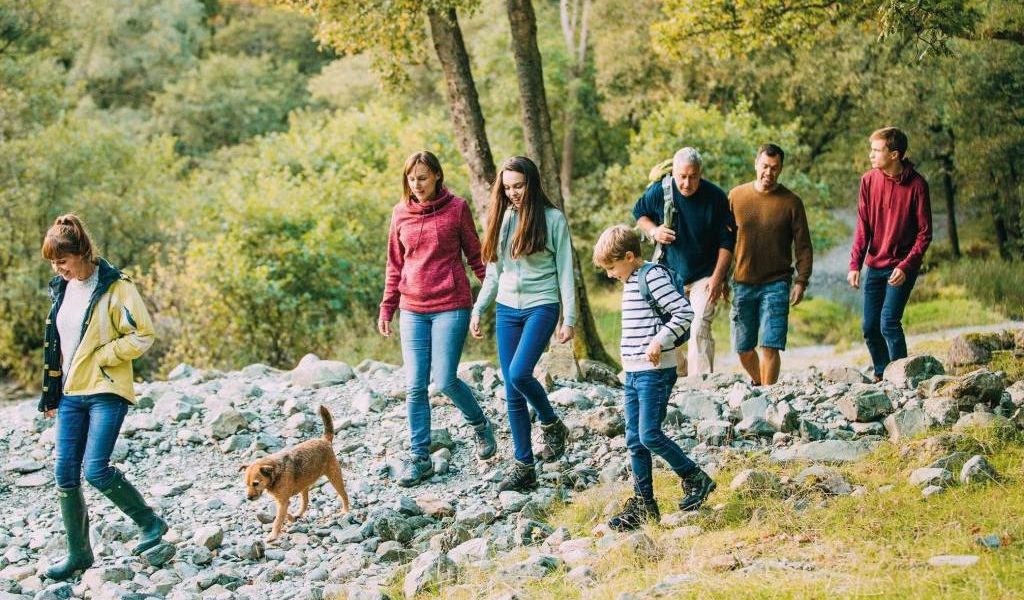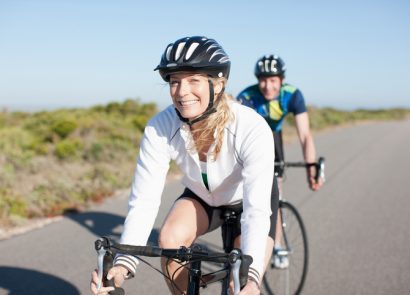Did you know that three quarters of children in the UK now spend less time outdoors than prison inmates*? It’s a disturbing statistic, especially with obesity levels on the rise and an increase in the amount of children being diagnosed with type 2 diabetes – in fact, the numbers of teens with the disease in London has risen by 70 percent in five years. A new study, published in the journal Pediatrics, has found that children start to move less beginning at age six, so the need to get your family active has never been more necessary. However, we know how hard it can be to tear your teens away from their devices, so here are some top tips to get you started.
Allow your kids choice
“Let your children choose activities or sports they would like to try, and if they’re not enjoying it, try something new,” advises Susie Malcolm, group family manager at David Lloyd Clubs (davidlloyd.co.uk). “It has to be fun to keep their interest. Once they find a class they enjoy, praise their efforts and offer plenty of encouragement. Make it easy for your children by providing them with plenty of opportunities to be active. David Lloyd Clubs has a range of sports, activities and play spaces for kids of all ages, so there’s something for everyone. Acknowledge their effort, rather than the outcome, to build their confidence. Don’t focus on them winning a match – instead, celebrate how hard they tried. It’s also important to understand that different children will enjoy different activities due to their personalities or physical abilities.”
Do it together
“Encourage your child to be active by doing things with them,” says Susie. “Exercising together has all the health benefits while developing family bonds – having a common ground, fitting in family time and creating positive associations with exercise. By forming a family routine where the activity becomes part of your week, you’re creating the basis of a lifelong habit. For example, you might decide that your family will take part in their favourite class together, a Sunday morning family swim, tennis or a family cycle, and then sit down to eat together. It’s sometimes hard to know what games to play, so look for family classes that also help to give parents tips on how to continue the fun at home. Let your children take ownership of the games and encourage them to teach you how to play to develop their interest and allow them to be in control.”
Be a role model
“Children copy their parents’ behaviour, so being active is a great way to encourage their passion for exercise,” Susie explains. “Sharing why you enjoy the physical activities you do, whether it’s the sense of achievement, exercise high or time with friends, will reinforce the beneficial outcomes of moving more. Create a home where being active is part of the family’s daily routine. This can be dancing in the kitchen, playing active games (such as twister, football or catch), a challenge between TV breaks or even teaching parents or grandparents how to floss!”
Family friendly exercise
Here’s our pick of activities to help get your children to be more active
Les mills born to move
“These classes appeal to toddlers through to teens, using dance, yoga, martial arts and athletic skills set to music, to fuel a love of physical activity,” says Justine Williams, global development manager for Born to Move. “Plus, the Les Mills On Demand platform even lets children take part in classes from the comfort of their own home.” Find out more at lesmills.com
Parkrun
This is a free, timed 5k run that happens in parks across the country at 9am every Saturday morning. Why not lace up your trainers and join in as a family next weekend? If you’ve got younger kids (aged four to 14), they can take part in the 2k junior parkrun on Sundays. Find your nearest one at parkrun.org.uk
10-minute shake ups
Change4Life, the government campaign to help us all be healthier, has teamed up with Disney to offer various ‘10-Minute Shake Up’activities on its website. These are designed to encourage younger kids to work to achieve the goal of 60 active minutes they need a day, while having fun with their parents. Search Change4Life and give them a go.
Make walks fun
Walking is the best way to get families outside,” says Ordnance Survey GetOutside champion Sarah Whiting (getoutside.ordnancesurvey.co.uk). “It’s healthy, it’s free and, with a bit of imagination, it’s also fun.” Try Sarah’s ways to turn a family walk into an adventure your kids will want to repeat.
- Go for a walk after dark. Even routes you know really well will seem like an adventure in the dark. When night falls, there is a reduction in man-made noise, so it’s an excellent opportunity to hear the outdoors. Walking at night gives you a chance for star-gazing, storytelling and spotting some of our precious nocturnal wildlife. Why not download a star-gazing app on your phone to help you identify our constellations?
- Play the find the object game. This is a modern spin on the traditional scavenger hunt. One person runs ahead and takes a close-up picture of an object on your route. The rest of the team then has to try and find the object when they reach the area. Kids absolutely love this game – expect lots of giggles while you try and work out what they’ve photographed.
- Packing snacks or a picnic turns a walk into an outing, which immediately makes it sound more fun. Giving yourself and your family time to sit down and take in your surroundings will not only make you appreciate being outside more, but it’ll also help refuel you for the walk back home.
- Take binoculars or a magnifying glass – both of these items open up a whole new world which is easily missed with the naked eye. Use binoculars to get a close-up look at birds and other wildlife or to check out where you are walking to in the far distance. A magnifying glass is excellent for observing ‘mini-beasts’or taking a closer look at bark, leaves and flowers.
- Anyone who has tried a pedometer or fitness tracker, such as Fitbit, will know that it’s a great way to encourage walking. Set a family target and then see if you can beat it each time you go out. Don’t forget to times your steps by the number of people walking to get a grand total.
- Mapping your walk on a piece of paper is a great way to take in your surroundings. Mark down any notable features and landmarks and then use it to find your way back home or to the car. You will find making maps in different environments, such as in a town, park or woodland, will give you very different results.
Visit getoutside.ordnancesurvey.co.uk for more tips on getting your kids active outdoors.






















